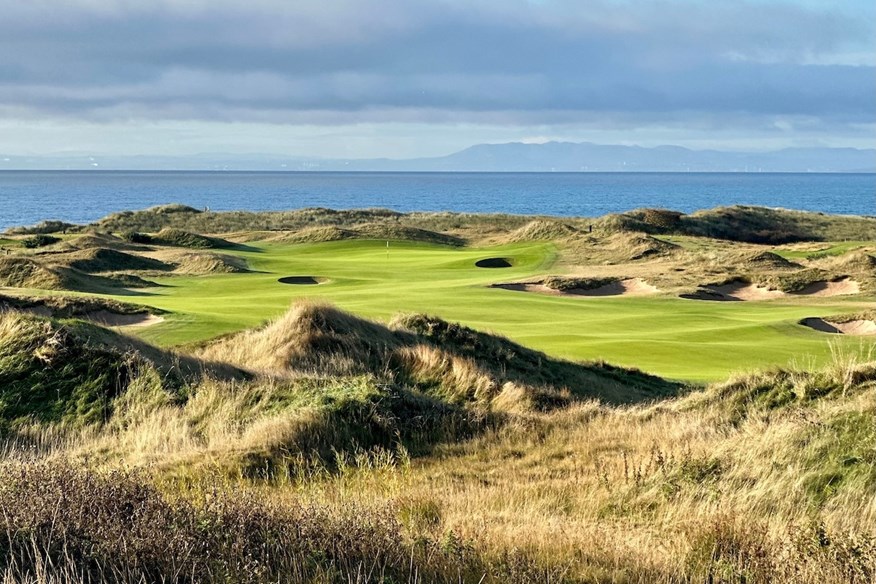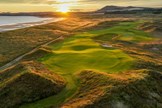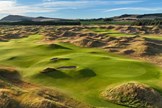‘Golf should be a challenge – but it must always be fun’
Last updated:
Clive Clark, former European Tour and Ryder Cup star – as well as legendary BBC commentator – on why the ‘fun’ element holds the key in great golf course design…
“My old buddy, Peter Alliss, used to say, ‘People don’t enjoy hacking out of the rough – and they certainly don’t enjoy losing golf balls.’”
Clive Clark is smiling as he talks about his late friend, the ‘Voice of Golf’, who he worked alongside for 18 years at the BBC. “Good fun,” Clark says, “which is just what golf should be – a challenge, yes, but it must always be fun.”
Clark’s days in the commentary box may be behind him, but he is as passionate as ever about golf course design. Looking after the club golfer is a key part of his philosophy. If you have played one of his courses – the latest of which, Dumbarnie Links on the southeast coast of Fife, is best described as a ‘modern classic’ – then the chances are that fretting over the difficulty of its test would have been secondary to the excitement and thrill of the ride.
“My golf course design philosophy is that I generally make fairways fairly wide, so it’s playable and people love it,” says Clark, who has designed 33 golf courses around the world. He offers The Hideaway Golf Club in La Quinta, California – not far from where he now lives – as another example.
“People will come up to me after they’ve played the front nine, saying I just shot 39, one of my best ever nines. They get excited that the course gives them the chance to play well and it inspires them. You don’t ask what they shot coming back in, of course!”
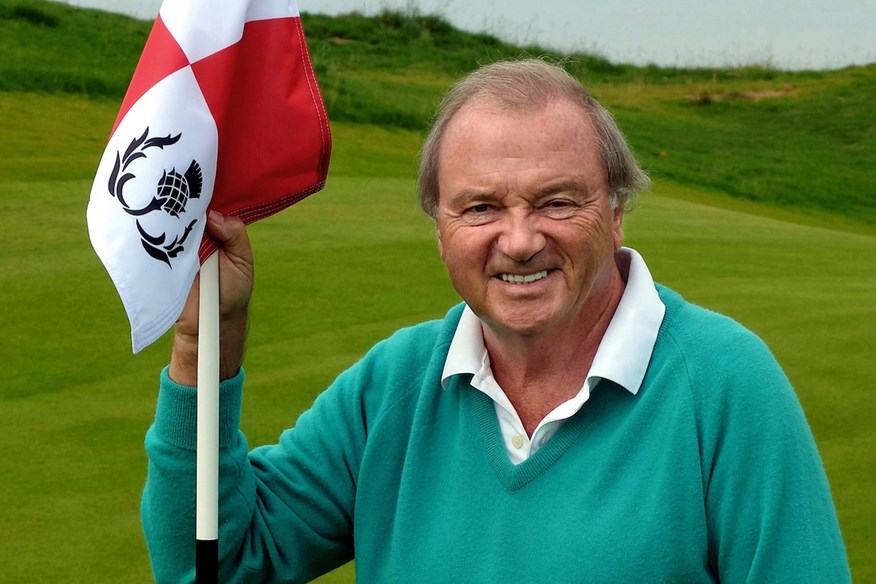
Clark goes into commentary mode when we begin discussing his career as a player – which can easily go under the radar such is his standing in the golf course design space. But the stats and the player were equally impressive. The Yorkshireman was the only unbeaten player on either side in the 1965 Walker Cup during his amateur days – the same year that he won the famous Brabazon Trophy.
He played in the 1973 Ryder Cup, won five times on the old European Tour, and as well as tying for third alongside Gary Player at the 1967 Open Championship, he also has a hole-in-one at Augusta National on his CV – a 2-iron into the 190-yard, par-3 16th. It was the first ace to be captured on film at the Masters.
Clark gave up playing professionally when he was just 30, describing the television opportunity that came his way as “too big and exciting to turn down”. Course design had not been on his radar until he covered the Players Championship for CBS. Pete Dye’s famous Stadium Course piqued his interest. He and Alliss then formed their own design company, going on to craft 22 courses together.
Prior to the pandemic, Clark was alerted by his long-time friend and highly respected golf journalist, Malcolm Campbell, to a piece of land on the north shore of Largo Bay, just 11 miles south of St Andrews.
Having grown up playing the likes of Ganton, Clark always had and still does have a particular fondness for links golf. There was an exciting project here, if he could get planning approval and, just as importantly, raise the necessary funds for the project.
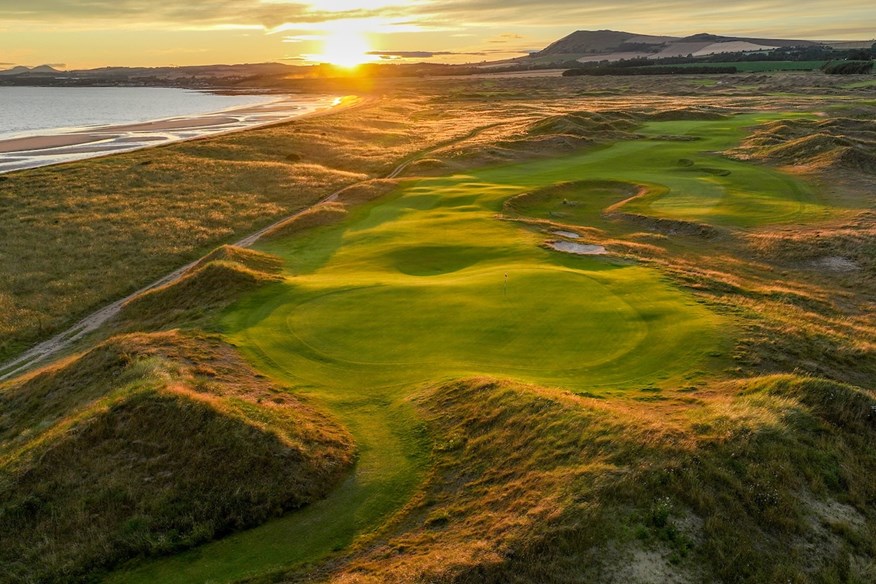
Thankfully, he did, for Dumbarnie Links is a masterpiece and has all the classic Clark hallmarks, including a healthy dose of risk-and-reward holes. Or, to put it another way, just plain old-fashioned good fun!
“I always felt inside that Dumbarnie was going to be very special,” says Clark. “There were only two dunes when we started, apart from the lower coastal dunes. We developed close to 600. In that respect, it’s manmade, but it looks like it’s been there for a hundred years.”
It really is a work of art. A lot of former players try their hand at course design, but Clark, who studied architecture in London, has a real eye for detail and all the necessary qualifications: he draws, he does the topographical plans, the masterplan, the layouts, you name it. When work commenced at Dumbarnie Links, he made it his home for four months and spent at least five days a week on site.
Reflecting on a job well done, he reveals that one of his favourite aspects about the course, aside from the magnificent views of the Firth of Forth, is how each hole feels like a separate adventure.
“They’re very individual,” he says. “You don’t see the next hole until you get there. They’re really a collection of individual holes that knit together.”
Asking him to name a favourite hole would be like asking a parent to name their favourite child. However, his love for taking on a challenge is obvious. “We have three par 4s where if conditions are right and you’re long enough, you can drive the green,” he says.
“However, you have to go over bunkers and nasty things to get there. That is the point. Your other option is to play safe and leave yourself a longer approach. There is no right or wrong way to play it and on any given day conditions will play their part.
“At Dumbarnie, there’s plenty of challenge, but play reasonably well and you can score. It gives you opportunities. It’s like shopping at Harrods when there’s a 50 per cent sale. You can get a bargain if you go for it! The experience of playing there is very special, with first-class people like our general manager, David Scott, who ensures that every guest is welcomed and treated like a member of a private high-end golf club for the day.”
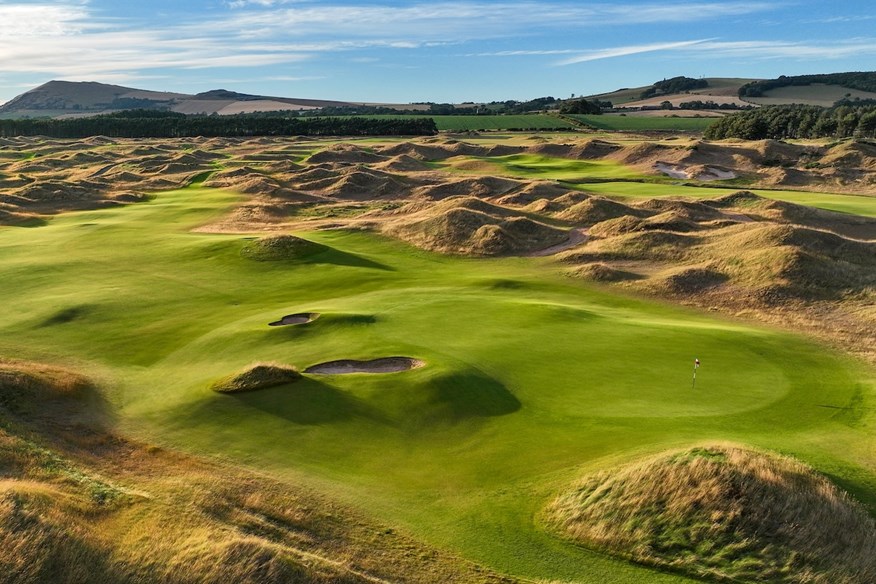
So, when you tee it up at Dumbarnie, throw caution to the wind and be aggressive. Or don’t.
“You pay your money and make your choice,” Clark says. “Whatever your strategy, you’re sure to enjoy the challenge. That is what golf has always been about for me and that is how I look at course design.
“We must remember we are working in the entertainment business! Not everybody is out to break the course record!”
Images by Gary Lisbon
